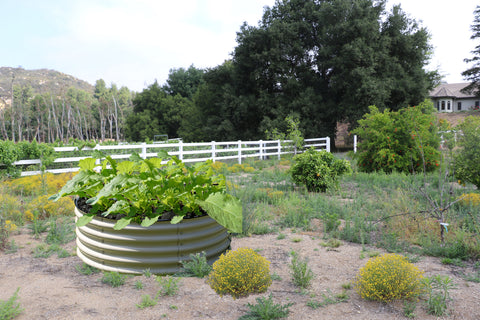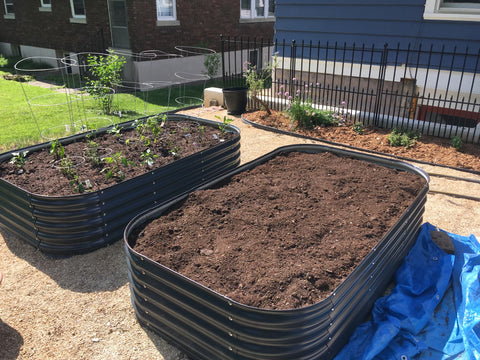Tips from Olle Garden Bed: 10 Top Gardening Skills for Beginners
Want to know how to start a garden? Find your confidence through these professional gardening techniques. The following content also has some reference value for raised garden beds.
Never planted vegetables? That's all right. Use these 10 easy to follow tips to make your growth dreams come true.
1. The site selection is correct.
Just like real estate, gardens are all about location. Keep your garden in the yard where you will often see it (invisible, absent-minded is certainly suitable for gardening). In this way, you will be more likely to spend time in it.

2. Follow the sun.
When you first learned gardening, misjudging sunlight was a common pitfall. Before choosing a place for your garden, notice how the sun passes through your yard. Most edible plants, including many vegetables, herbs and fruits, need at least six hours of sunlight to thrive.
3. Close to water.
One of the best gardening techniques you will get is planning your new garden near the water source. Make sure you can connect the hose to your garden so you don't have to pull water on the plant every time it is thirsty. The best way to tell if a plant needs watering is to push your fingers down an inch (about one knuckle deep) into the soil. If it's dry, it's time to water it.

4. Start with great soil.
One of the most important suggestions when starting a garden is to invest in nutrient rich and well drained soil.
5. Consider the container.
When space is precious, look for containers. You can plant many plants in the pot, including vegetables, herbs, flowers, fruit trees, berries and shrubs. When gardening in a container, use a pot large enough to contain the plants it carries.

6. Select appropriate plants.
It is important to choose plants that match your growth conditions. This means placing plants that like sunshine in sunny places, choosing heat-resistant plants in warm climates, and providing sufficient elbow space (or climbing grid) for pumpkins, melons and other ground to devour vines. Do your homework and choose the varieties that grow well in the place where you live and the space you own.
7. Discover your area.
Knowing your "cold zone" can help you choose the best plants. In short, it describes the coldest place where plants can grow. The higher the area code, the warmer the climate. Therefore, if a plant is "resistant to zone 4" and you are gardening in zone 5, the plant will survive in your yard. However, if you are in Zone 3, it is too cold to plant this particular plant.

8. Know your frost date.
Planting too early (or too late) in this season will bring disaster to your garden. You need to know the last average spring frost date in your area, so that you won't accidentally kill the plants by extinguishing them too early. It's also good to know your first average autumn frost date, so you can harvest plants or move them indoors before the late season cold damages them.
9. Add some covers.
Apply a 2 to 3 inch deep covering around each plant. This will help reduce weeds by blocking the sun and water loss by evaporation, so you must reduce watering. For a polished look, spread a layer of straw, crushed leaves, pine grass, or some other locally available material.

10. Feed the plants regularly.
We have discussed the importance of starting with high-quality soil, but this soil works best when combined with regular provision of high-quality nutrients for your plants. In other words, amazing soil+first-class plant food=super garden success.
One last suggestion: stock the basic tools you need to make it easier to grow.
